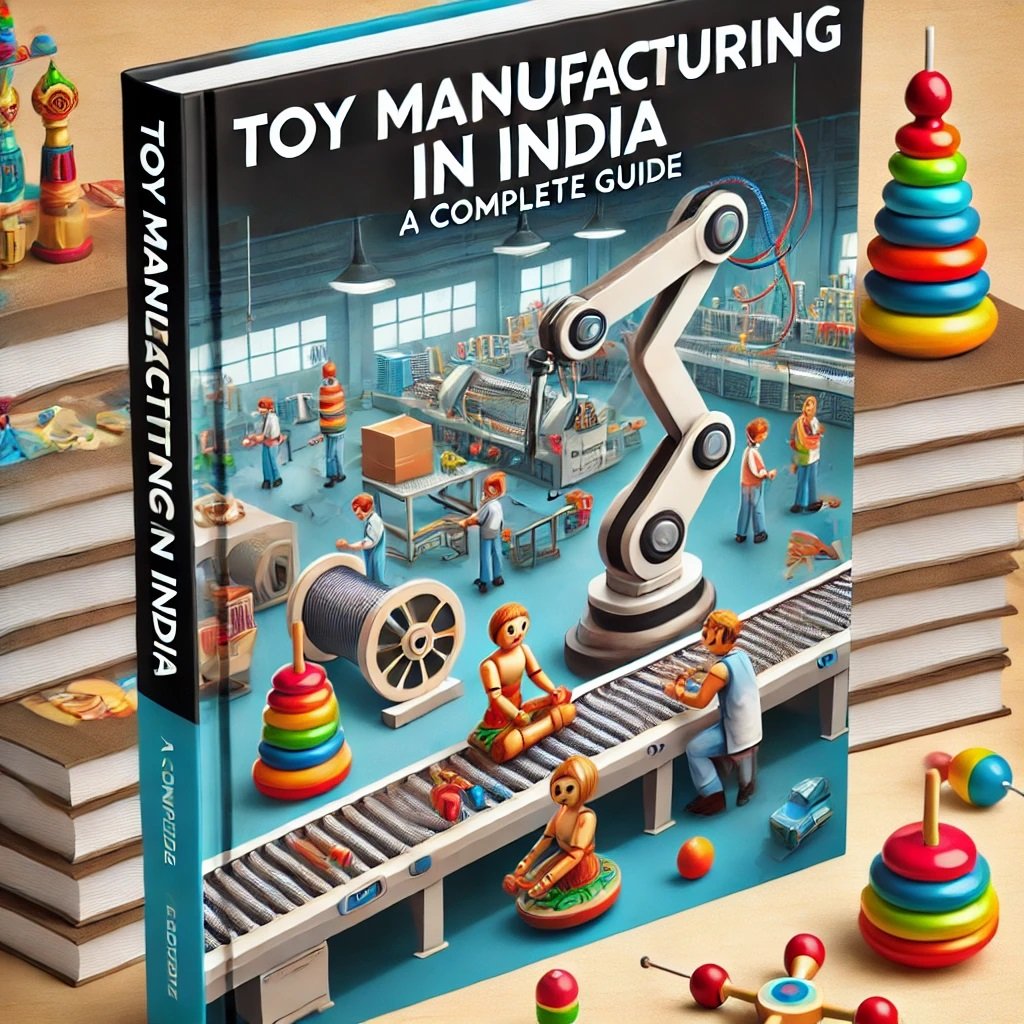
Introduction
The toy manufacturing industry in India is experiencing rapid growth due to increasing demand for locally produced and culturally relevant toys. Understanding the economics, manufacturing processes, and design aspects of toys is essential for entrepreneurs and designers. Several books provide valuable insights into toy manufacturing, covering traditional craftsmanship, modern technology, and sustainable practices.
This guide highlights the best books on toy manufacturing in India, helping readers explore various aspects such as raw materials, production techniques, government initiatives, and profitability.
1. Market Overview: Beyond the Numbers
| Factor | Details |
|---|---|
| Demographic Dividend | India’s growing youth population increases toy demand. Rising disposable incomes further fuel the market. |
| Cultural Relevance | Indian-themed toys reflecting mythology and regional heritage are gaining popularity. |
| Digital Integration | AI, AR/VR, and interactive learning toys are emerging as high-growth segments. |
| Rural Market Potential | Rural areas remain largely untapped, offering opportunities for market expansion. |
| Export Opportunities | India’s competitive labor costs can boost toy exports, particularly for STEM and educational toys. |

Best Book on Toy Manufacturing in India
2. Cost Structure: Detailed Analysis
Raw Materials: Price Volatility and Sustainability
- Fluctuations in plastic resin prices affect manufacturing costs.
- The use of bio-plastics and recycled materials helps reduce environmental impact and costs.
- Locally sourced wood and fabrics support sustainable production.
Labor Costs: Skill Development and Productivity
- Investments in skill training programs improve workforce efficiency.
- Lean manufacturing techniques reduce waste and optimize labor utilization.
- Fair wages and worker safety programs ensure long-term sustainability.
Machinery & Infrastructure: Technological Advancement
- Automation and robotics improve production speed and quality.
- Local mold-making facilities reduce dependency on imports.
- Shared infrastructure, including testing labs and warehousing, lowers costs.
Compliance & Safety: Long-Term Investment
- BIS certification increases credibility and prevents recalls.
- Quality control systems reduce product defects and enhance consumer trust.
- Compliance costs should be viewed as an investment in brand reputation.
Distribution & Logistics: E-commerce and Supply Chain Optimization
- Data-driven inventory management reduces logistics costs.
- Efficient reverse logistics streamline return and repair processes.
- Local warehousing speeds up deliveries and cuts shipping costs.

Best Book on Toy Manufacturing in India
3. Government Initiatives: Strategic Implementation
| Initiative | Impact |
|---|---|
| PLI Scheme | Supports manufacturers through incentives and promotes competitiveness. |
| Toy Clusters | Infrastructure and training centers boost productivity. |
| Import Duty Hike | Encourages local manufacturing by reducing dependence on imports. |
4. Challenges and Strategic Solutions
High GST: Policy Rationalization
- Lowering GST on toys makes them more affordable.
- Alternative tax incentives can encourage local production.
Dependence on China: Diversification and Localization
- Local supply chains for raw materials and electronic components reduce dependency.
- Research and development investments create domestic alternatives.
Lack of Advanced Tooling: Capacity Building
- Establishing tooling and mold-making centers strengthens the sector.
- Financial and technical support for local manufacturers enhances self-sufficiency.
5. Profitability & ROI: Sustainable Growth
| Strategy | Benefit |
|---|---|
| Value Addition | Educational and eco-friendly toys improve margins. |
| Brand Building | Strong marketing increases brand recognition. |
| Diversification | A broad product range reduces market risk. |
| Sustainability | Eco-friendly practices enhance brand image. |
| E-commerce Focus | Direct-to-consumer sales increase profitability. |

Best Book on Toy Manufacturing in India
Best Books on Toy Manufacturing in India
1. Joy of Making Indian Toys – Sudarshan Khanna
- Focuses on traditional Indian toy-making techniques.
- Provides insights into cultural craftsmanship.
- Available on Amazon -check price
2. Toy Design Artbook: Designing the Future of Toys in India
- Explores the intersection of tradition and modernity in toy design.
- Covers sustainability and innovative manufacturing methods.
- Available on Amazon -check price
3. TOY MAKING FOR BEGINNERS
- Guides on crafting plush and wooden toys.
- Emphasizes educational and manufacturing aspects.
- Available on Amazon -check price
4. Making Soft Toys – Karin Neuschütz
- Covers design, sewing techniques, and patterns.
- Useful for both beginners and professionals.
- Available on Amazon -check price
5. Creative Soft Toy Making – Pamela Peake
- Provides innovative soft toy-making techniques.
- Suitable for both beginners and experienced crafters.
- Available on Amazon -check price

Best Book on Toy Manufacturing in India
Conclusion
The toy manufacturing industry in India presents numerous opportunities due to growing demand, supportive government policies, and emerging technologies. Understanding the market dynamics, cost structure, and profitability factors can help businesses thrive.
For those interested in learning about toy manufacturing, the books mentioned above offer valuable knowledge on traditional craftsmanship, modern design trends, and sustainable production. Investing in the right knowledge can enhance business strategies and contribute to the growth of India’s toy industry.
Key Takeaway
For aspiring toy manufacturers, students, and industry professionals, the best book on toy manufacturing in India depends on their area of interest—whether it’s traditional methods, modern technology, or soft toy making.
